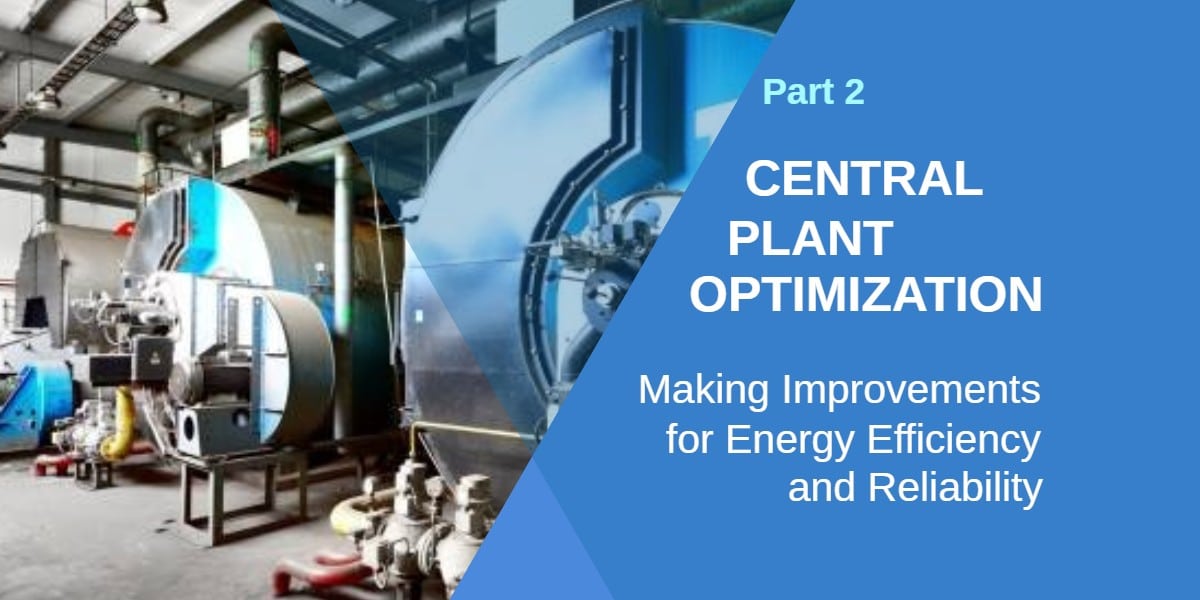
 Posted by Pam Hoddinott
Posted by Pam Hoddinott As you will recall from Part 1 of our Central Plant Optimization blog, central utility plants (CUP) are typically used to provide for the thermal and power distribution needs at large industrial plants and commercial high rises, as well as for campus type environments. From an energy and environmental standpoint, total building or campus energy consumption for these large facilities is often in excess of 60% for the CUP. Much of the annual capital and operating budgets for infrastructure is also dedicated to the CUP, including labor and material and specialized third-party contractors. Because of this, your central utility plant is often the best place to look for significant savings through optimization. Let’s look at a few things that can be done in that area to make these critical assets more efficient and reliable.
Variable Flow
First, flows of air and water to meet building production and occupancy needs can be made variable rather than static. Fans and pumps can be equipped with variable frequency drives (VFDs), which allow them to throttle back to meet the dynamic building load changes that result from factors like outside weather conditions and changes in production or occupancy. The benefit of slowing these devices down is big from an energy standpoint, as energy consumption goes down by the cube of frequency or the square of speed. For example, a 20% reduction in frequency delivered to a fan or pump results in almost a 50% reduction in energy consumption (0.8 cubed is 0.512).
Heat Recovery
In addition to variable flow, heat recovery can improve the overall efficiency of large thermal systems. Heat can be recovered from exhaust air streams, from steam condensate that is returned to boilers, and even captured from air compressors and other industrial equipment. This heat can be used to preheat or heat air and water for comfort or process uses and further boosts Central Plant Optimization.
Control Systems
Advanced CUP control systems can optimize the value of heat recovery and they also optimize the operating performance of CUP equipment like chillers, air compressors, and boilers. By monitoring and controlling discharge temperatures and pressures and by maintaining optimal temperature differences between supply and return water systems, central equipment operates efficiently and is coordinated with the variable air and water delivery systems enabled by the VFDs.
Reliability and Redundancy
Improvements like these can improve reliability and redundancy in CUPs, eliminating single points of failure. New equipment and systems can be used to meet “base” loads to most effectively lower energy and maintenance costs, and existing equipment may be suitable for re-conditioning and re-use for back-up and to meet “peak” load requirements.
Capital Improvement
As an owner and operator of a central utility plant, the most important aspect of all might be to understand how your enterprise approves capital improvement projects so that you can build your business case for Central Plant Optimization and upgrades accordingly. You will need to take into account anticipated equipment life cycles, the costs of rental/spare equipment during outages, energy costs, the true cost to your business of outages caused by your CUP, the positive environmental impact of operating more efficient systems, and other financial metrics. Central Plant Optimization ensures you achieve long-term performance efficiency. If you missed it, please read Part 1 of our Central Plant Optimization blog series here.
Chateau Energy Solutions Making Energy an Asset®
Ready to get started on the path to energy efficiency and sustainability?